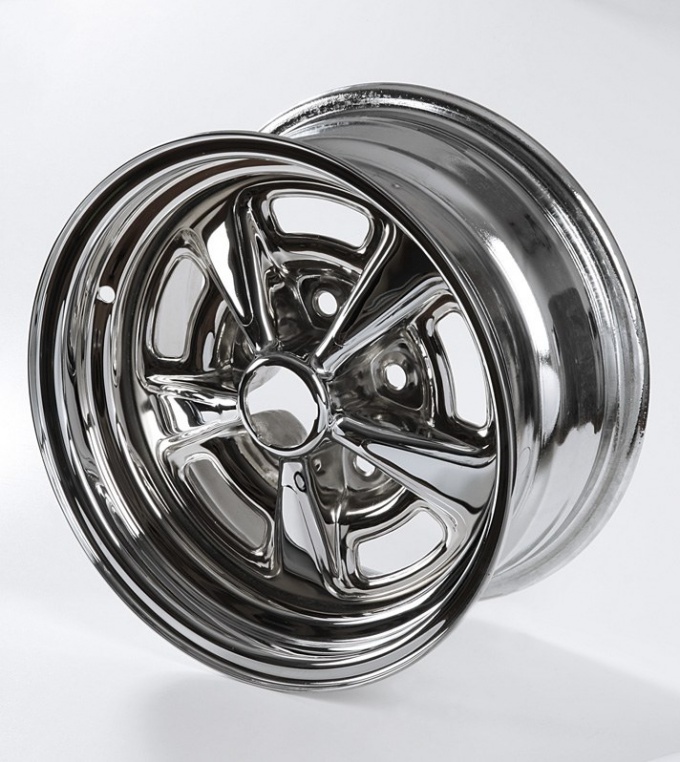Plating is a metal thin film deposited on the surface by electrolytic deposition. The thickness of the electroplated film can be from fractions of a micrometer to tenths of a millimeter. Today common several types of galvanic coatings.
Zinc, and cadmium are chemical elements, well opposing galvanic corrosion. The process of protection occurs due to self-corrosion of zinc and cadmium. The level of protection of metal from corrosion ( often steel) is directly linked to the thickness of the coating or its mass. Galvanizing is one of the most efficient and cost-effective ways of protecting the material from corrosion.
Involves coating the product detail of steel or its alloys (mainly with the "participation" of copper, aluminum, zinc), plating films of 1-50 microns. There are methods of Nickel plating and non-metallic products; it can be porcelain, plastic, ceramics, glass. Nickel plating usually has three objectives:
- protection against material corrosion processes (including chemical effects);
for giving of durability;
- formation of the decorative appearance of the product (velours plating).
Chrome
The product is treated with a thick layer of chromium is mainly to impart improved resistance to wear. Another important component of the chromium plating process – the improvement of the product in aesthetic terms. Especially widely used chrome tape in the automotive industry. Also chromium coated parts of motorcycles, scooters, bicycles. This type of chromium the most common and is called "shiny". But there is a second type of processing of products - the "black" chrome. This is a more reliable protection against wear, besides, the material is treated in a similar way, does not reflect light; this can be important, for example, when designing optical systems.
The application of a copper layer on the steel (sometimes zinc) products. Copper plating is used to mark sections from carburizing (or carburizing). Here, the copper performs the function of protector of the product from the diffusion of carbon, the process of penetration into the metal carbon can cut a part from-for the formed solid surface layers. Another field of application of copper plating – formation of an intermediate layer by plating.
The plating is made not only for decorative purposes. They cover food processing equipment to impart antimicrobial properties to surfaces, work surfaces, spotlights, car headlights and other lamps to increase their reflectivity. Methods of silver plating, gold plating used in the electronics industry. Gilding products allows not only to give a dramatic look to the product or roof coating, but also to keep it intact for the past 100-150 years.
Galvanizing and cadmium plating
Zinc, and cadmium are chemical elements, well opposing galvanic corrosion. The process of protection occurs due to self-corrosion of zinc and cadmium. The level of protection of metal from corrosion ( often steel) is directly linked to the thickness of the coating or its mass. Galvanizing is one of the most efficient and cost-effective ways of protecting the material from corrosion.
Nickel plating
Involves coating the product detail of steel or its alloys (mainly with the "participation" of copper, aluminum, zinc), plating films of 1-50 microns. There are methods of Nickel plating and non-metallic products; it can be porcelain, plastic, ceramics, glass. Nickel plating usually has three objectives:
- protection against material corrosion processes (including chemical effects);
for giving of durability;
- formation of the decorative appearance of the product (velours plating).
The product is treated with a thick layer of chromium is mainly to impart improved resistance to wear. Another important component of the chromium plating process – the improvement of the product in aesthetic terms. Especially widely used chrome tape in the automotive industry. Also chromium coated parts of motorcycles, scooters, bicycles. This type of chromium the most common and is called "shiny". But there is a second type of processing of products - the "black" chrome. This is a more reliable protection against wear, besides, the material is treated in a similar way, does not reflect light; this can be important, for example, when designing optical systems.
Copper plating
The application of a copper layer on the steel (sometimes zinc) products. Copper plating is used to mark sections from carburizing (or carburizing). Here, the copper performs the function of protector of the product from the diffusion of carbon, the process of penetration into the metal carbon can cut a part from-for the formed solid surface layers. Another field of application of copper plating – formation of an intermediate layer by plating.
Silvering and gilding
The plating is made not only for decorative purposes. They cover food processing equipment to impart antimicrobial properties to surfaces, work surfaces, spotlights, car headlights and other lamps to increase their reflectivity. Methods of silver plating, gold plating used in the electronics industry. Gilding products allows not only to give a dramatic look to the product or roof coating, but also to keep it intact for the past 100-150 years.






